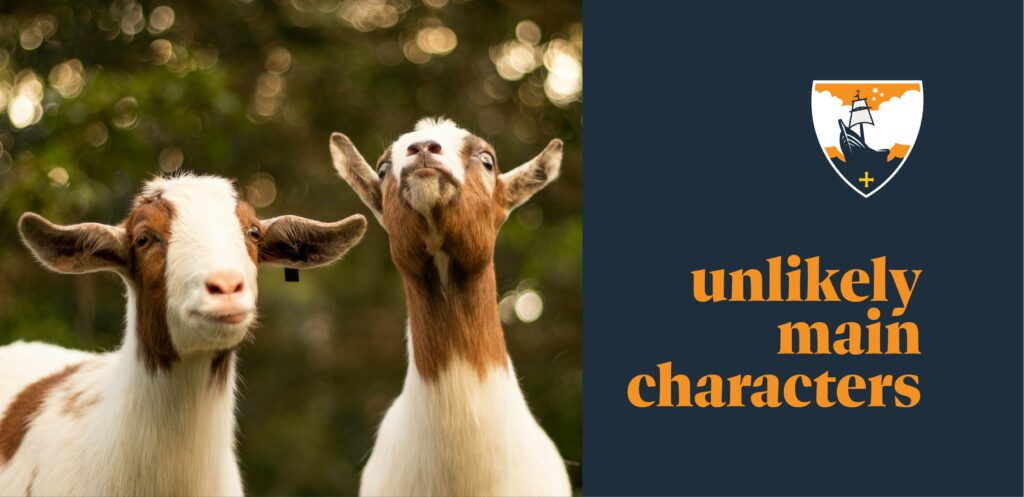"The awakening of an ecological consciousness requires the acknowledgment and celebration of our reciprocal relationship with the world”
- Robin Wall Kimmerer in “Braiding Sweetgrass”
By Jane, St. Andrew's, Grand Rapids
For members of Episcopal congregations, we understand “the world” is God’s World, God’s Creation, that our well-being and future depend on. As Robin writes above, it is a reciprocal relationship, an interdependency within a community. However, for most of us, to engage in a relationship, it needs to be personal and relevant to our lives.
It is the personal connection that activated a group of us to form our St. Andrew’s Living Conservation (i.e. caring for creation) Ministry. Through our new relationships, our shared attention and knowledge we had a startling awareness of a major problem in the woods bordering the church parking lot that involved a destructive vine engulfing and killing the trees.
Our awareness began in 2020 when we noticed a few large trees along the west side of the parking lot were dead. We contacted the Kent Conservation District (KCD) Strike Team, and they explained that the vine was Invasive Bittersweet. Bittersweet is known as the worst invasive vine – it squeezes trees like a cobra to kill, and if no trees present, can engulf the ground areas. They recommended cutting the vines and dabbing the bottom with a chemical, best done in the fall or winter, when the tree sap isn’t running and for the poison to be effective.
On a fall day in 2022, parishioners, members and the Strike Team met to treat the area west of our parking lot. We met a second time with help from Plainsong Farm staff. We did follow up walks over the next two years and saw no obvious problems, except for smaller ground areas that we sprayed under guidance of KCD. KCD then followed up in 2024 with spraying.
It has now been four years since focused treatment began. In spring of 2025 we asked the director KCD Strike team, Ryan, to walk the woods with us. We noticed a contained ground area that would need further spraying to control. While spraying that summer Ryan indicated the vine growth appeared to be more extensive and difficult to control with the spraying treatments. He recommended a different approach by a veterinarian he had met who specializes in taking out invasive species with her Spanish goat herd.
Michelle Walker, DVM, connected with us and a few weeks later we walked the entire wooded property. Shockingly to us, in the far northwest corner we found a giant, impassable, jungle-like section. Following two intensely hot summers, the vines had thrived and spread into the surrounding neighborhood, engulfing the trees and growing intense carpet layers on the ground. It was now the entire neighborhood community in this important watershed – not just St. Andrew’s – that needed to address the bittersweet invasion.
Transform: We are dedicated to learning and formation that will bring about transformation in the lives of the those who worship here, in our community and the world.
One of our Living Conservation Ministry mission points includes interconnections to our entire community. This important walk with Michelle opened new opportunities for our work in the community, for “our actions to involve connecting and healing through purposeful work.”
Michelle assured us her goats could do the job and offered to help contact neighbors. We understood the importance of proceeding as soon as possible, before winter arrived,
Our Ministry group met, planned and set the date for a neighborhood event. We confirmed presentations by Ryan of KCD and Michelle Walker, DVM, designed a flier to distribute to parishioners and the affected community. We made plans to canvas the neighborhood for informed conversations and created a report with details and costs to obtain Clergy and Vestry approval for the project.
On October 5, 2025, the neighbors showed up and got engaged! Within a week five neighbors signed contracts, several who never met before were now engaged in regular conversation and excitement of the goats coming. October 16 saw the goats arriving at the first property, six committed partners and one pass-through permission. All those involved expressed how much they learned and their commitment to working together to reduce their individual costs and efforts. They are looking ahead to healing the land.
A project that started with noticing a few dead trees on St. Andrew’s property has grown into a significant community engagement project!


